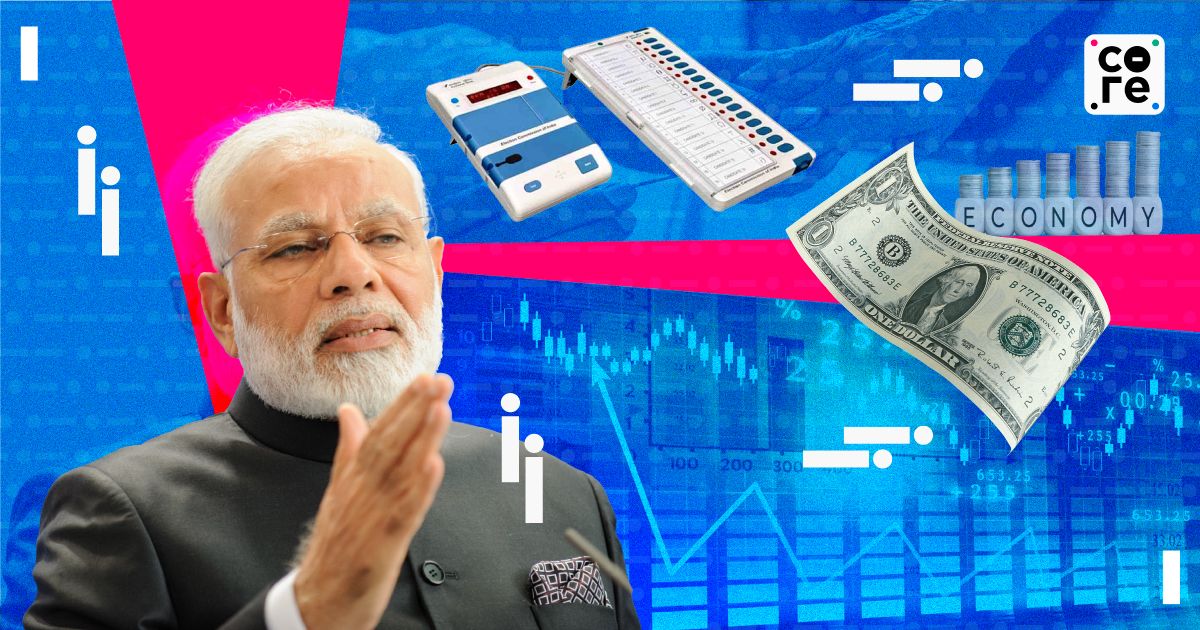In the 2010s, trendy, social media-fuelled, millennial-focused brands like BuzzFeed, Vox Media, Huffington Post, and Vice were taking over, raising hundreds of millions of dollars at several billion dollar valuations.
The party is over. BuzzFeed is a penny stock. Vox Media is getting further from its dream of going public. And Vice Media is bankrupt. Others are eking out an existence by laying off employees every year.
It wasn’t supposed to be this way, at least not in India, with our massive consumer economy running on cheap internet and a young population. When Vice launched in India in 2016, it was planning a TV channel and had partnered with Times Internet.
Today, Vice India is practically shut.
What went wrong? And what lessons does Vice India’s story hold for foreign media companies betting on the country?
Indian Entry
A counter-culture child of the 1990s, Vice didn’t make waves internationally until the 2010s. Its ‘edgy’ reporting on culture, music, politics, and sexuality inspired millennials around the world who were losing interest in traditional news. Vice wasn’t just a place to read about obscure sexual kinks or underground music scenes. It won a long list of news and entertainment awards including news documentary Emmys, a Peabody, a Pulitzer, and several advertising accolades.
Naturally, when Vice launched in India, journalists here were thrilled.
“Like any other young journalist in New Delhi, I was tracking Vice’s launch in India,” a former Vice India employee told The Impression, requesting anonymity as they did not want to jeopardise relationships with their former employers. “I saw a young and edgy team of journalists running the newsroom in 2016-17. They were doing stuff you didn’t see in independent—let alone mainstream—Indian media yet… I was really jaded after spending 5-6 years in the traditional print media industry. Vice gave me a lot of hope.”
Two other former employees said their fascination with Vice began long before the company launched operations in India. “I was a fan of Vice even in college and graduate school,” another former employee told The Impression, also on condition of anonymity. “I always thought that if Vice launched in India, I would at least apply. You didn’t have to be a certain somebody to be a journalist at Vice, like you did in BBC, or NDTV, or The Indian Express.”
But trouble plagued Vice India right from the beginning, especially its editorial department. In 2018, several top editors resigned amid clashes over stories that could upset the government or invite “a phone call from Amit Shah”, Newslaundry reported. In mid-2018, Vice shut its Delhi office and moved all operations to Mumbai. Editorial staffers were asked to step away from news and focus on ‘magazine-like’ features instead.
“This was just the beginning of how things were during my time in Vice: things would be vague, and teams and projects would be shut down at any time,” the first former employee quoted above said.
Vice Media did not respond to an email seeking comments.
Vice’s joint venture with Times Internet also fell apart in just over a year after it was announced. Without the partnership, Vice no longer had access to a highly-regulated Indian TV licence. Chanpreet Arora, formerly a senior sales executive at Times Internet, had been appointed CEO of Vice India in 2017. In 2019, she left the company and was never replaced.
That year, Vice India began the first of its series of brutal layoffs that became routine, right up to early 2024. Some employees jokingly referred to the 2019 job cuts as ‘The Red Wedding’, a reference to the iconic Game Of Thrones episode where several main characters were murdered.
“People were sent an email the evening before where they were told to come to the office,” the first former employee told The Impression. “The next day, almost the entire editorial team, including the editor-in-chief Rituparna Som, was laid off. The management cited ‘restructuring’ in the company.”
Vice’s then-CEO Hosi Simon had flown to India from the US to conduct the layoffs along with Samira Kanwar, then-Vice President for content at Vice Asia-Pacific (APAC).
Company filings show that in June 2020, the India unit formally changed its name from Juventud Digital Media Pvt Ltd to Vice Media (India) Private Limited in an extraordinary general meeting. Vice India was now part of Vice APAC, a wholly-owned subsidiary of a foreign parent firm.
Instead of an India newsroom, Vice decided to run a cross-border ship under the auspices of Vice APAC. The company launched a new division called Vice World News, which would bring together reporters from across Vice’s international offices to report on stories for the website. Vice World News appointed Filipino journalist Natashya Gutierrez as editor-in-chief for Asia Pacific. The Indian editorial team reported to her.
Then the legal notices came.
A Matter Of FDI
In 2021, Vice India received multiple legal notices from India’s Ministry of Information & Technology (MeitY) asking why Vice Media (India), owned by US-based Vice International Holding Inc, was operating a news business in India.
In October 2020, India issued new rules restricting foreign investment in digital news companies to 26% only after getting government approval. The next year, India updated the IT Act (pdf) laying out rules of operation for all digital news organisations that had been operating in a regulatory grey zone so far.
Once it received the notices, Vice India began reviewing all its content that could be defined as ‘news’, both former Vice India employees quoted above said. The company geoblocked some stories and related social media posts. The company also informally told its journalists to steer clear of any ‘newsy’ stories, especially those related to religion, caste, and politics, both former employees said.
In April 2022, the company held an extraordinary general meeting and passed a resolution altering its memorandum of association and clarified that it was not in the business of news or current affairs. It was the second time since its launch that Vice India was giving up on news. Vice India probably had little choice. Per another company filing from January 2022, Vice India had borrowed $500,000 from its US holding firm in May 2019 and planned to raise another $10 million in the future.
Vice wasn’t the only one affected by India’s restrictive rules on foreign direct investment (FDI) in digital news. Last December, the BBC announced it was restructuring its India operations to comply with the 26% cap in foreign investment. The announcement came months after India’s tax authorities raided the BBC’s offices in Delhi and Mumbai after it released a documentary reporting on Prime Minister Modi’s role in the 2002 Gujarat riots.
Four senior BBC India employees left the firm to start a local firm called Collective Newsroom, which now employs all of the firm’s India employees. Collective Newsroom begins operations as a news provider to the BBC UK today.
Several Indian digital news companies have filed petitions challenging the Act (see a full list here); all of them have been transferred to the Delhi High Court for a collective hearing.
Global vs. Local
Vice Media has had a hard time doing business for a while now. In May last year, it filed for Chapter 11 bankruptcy, following which it was acquired for $350 million, led by the hedge fund Fortress Group. Reports suggest the spendthrift and ‘brash’ ways of founder Shane Smith also contributed to the company’s demise.
Yet, Vice India was making money.
According to company filings, Vice Media (India) made just under Rs 60 lakh in revenue from operations In FY18, with net losses worth over Rs 4 crore. The next year, its revenue rose rapidly to over Rs 13 crore, but with losses of nearly Rs 12 crore. However, the company turned profitable in FY20 and made a modest net profit in FY22 and FY23 as well, company filings show.
While Vice India’s editorial business seemed to be a non-starter, its branded content and studios business was doing relatively well. “Vice was a new entrant in the Indian market and was trying to educate brands on what it stood for,” a third former Vice India employee told The Impression, requesting anonymity as they were not authorised by their current employer to speak to the media. “But it found a lot of synergy. The branded content business was, in fact, the only bright spot in an otherwise difficult situation given that it started in 2018 and was hit by Covid only two years in.” Vice India had successful collaborations with large brands such as Budweiser and became the agency of record for several more. Just last month, it published social media content for brands such as Royal Enfield and McDowell’s on its Instagram handle.
Besides, employees in the branded content teams were largely unaffected by layoffs at Vice India. It was also producing top tier docu-series for OTT platforms in India, including Indian Predator for Netflix and Rainbow Rishta and Cinema Marte Dum Tak for Amazon Prime Video.
Arguably, Vice’s troubles in its home market took down the India operations. But at the heart of it, Vice India could not get its main product—news—in order. India’s onerous regulations on digital news just added to the chaos.
“Nobody at the Vice India office understood what the Vice brand stood for,” the first former Vice India employee says. “Much of the content strategy for video and editorial included replicating or force-fitting ‘edgy’ coverage that the Vice US teams were doing for the Indian website. I won’t dismiss all of it; some of the work produced by the India team and freelancers was actually good. But mostly, they were shooting in the dark.”
With constant layoffs and changes in the editorial structure, teams found that the company kept shifting priorities on its news business. “The biggest question Vice [India] didn’t have an answer to was, ‘What is Vice?’” the second former Vice India employee told The Impression. “Teams were told to do ‘Vice-y’ stories. But in trying to cover the weird and the wonderful, we lost out on becoming the voice of the Indian youth,” something that made Vice a powerful media company to begin with.
In the end, just like rival Buzzfeed, Vice gave up on the business of news altogether, awards and all. Last month, the company announced it was shutting down the Vice website altogether and laying off hundreds of employees (again).





